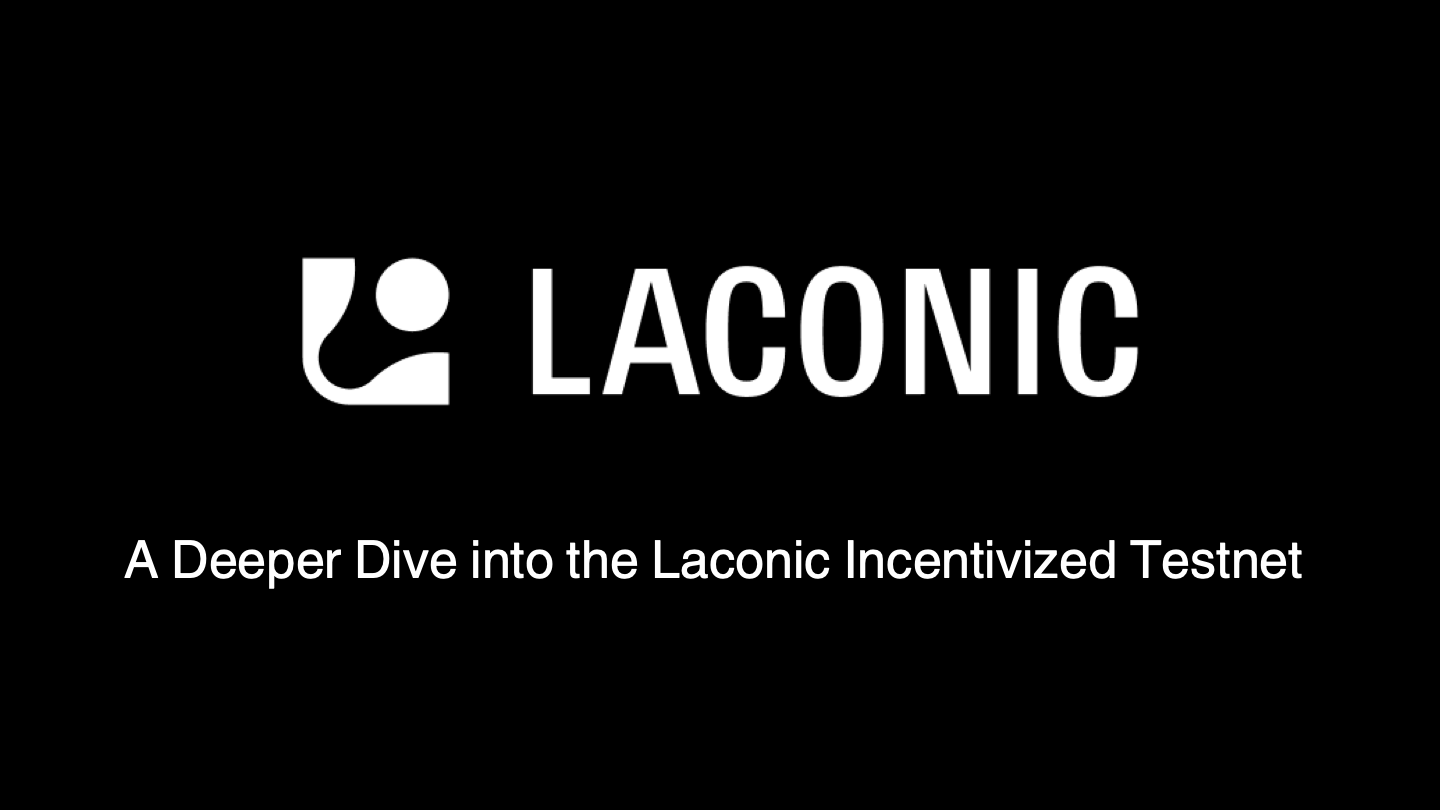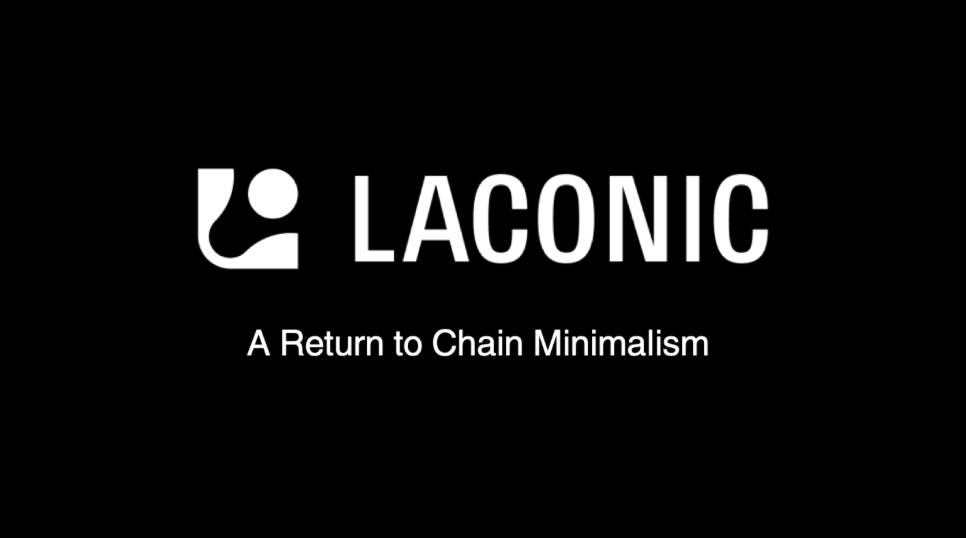How is Laconic different?

Vision
We believe that Web3 and blockchain technologies offer the promise of permissionless and equal access to new digital tools and financial instruments, and that these properties can be a force for positive change. Critically, decentralization of the networks and resources in Web3 is the key protection against the monopolistic jurisdiction of large tech companies and overzealous governments.
We further believe that the creation of public, consensus driven, cryptographically verifiable data leads to greater transparency and accountability. Finally, we believe that transacting on blockchains fosters incentive alignments through tokenomic engineering, allowing us to be more deterministic about how systems and society run.
These are the core values that imbue all of the design decisions in creating the Laconic Network.
Challenges
The challenges facing Web3 adoption are significant, and threaten to prevent the fulfillment of the promise and vision. Laconic Network is focusing on a set of challenges that arise when DApp developers need to interact with blockchains and query the data that is stored there.
Working with blockchain data is more challenging than traditional web development because of the storage constraints, the overhead of preserving consensus and protecting networks from attack.
Other significant challenges include:
- Blockchain nodes are designed to be write-optimized and bear large overhead costs for storage, network gossip, and computation required for consensus and security.
- True internet scale growth (eg. comparable to Facebook or Twitter) is not possible on existing Web3 backend infrastructure. Mass adoption will require the development of a data scalability layer that facilitates for Web3 the types of usage patterns that we expect from Instagram, Google, and LinkedIn.
- These challenges all compound when cross chain data is called for, which is increasingly the case. The data scalability layer will also need to account for cross-chain interoperability.
Laconic isn’t the first to address the challenge of building a data availability layer for Web3. Companies such as Infura and Alchemy have long offered blockchain data services as convenient APIs for DApp developers, and have thus facilitated the early growth of high utility applications that interact with the underlying chains. As centralized services with quickly growing traction and clout, they already in some ways resemble the monopolistic centralized players of Web2. The convenience they offer is paid for at the price of losing censorship resistance and permissionless access. In short, we trust these companies to tell us the truth and treat us right.
Somewhat truer to the ethos of blockchain and Web3 are The Graph and Covalent, both of which have recently launched products that have elements of decentralization and verification of the data being served. For Ethereum, these services are limited to indexing events, transactions, and internal transactions, and don’t typically index the state and storage trees at all. One consequence of this is that they don’t support the Ethereum JSON RPC get_proof() call, which is essential to safeguarding the verifiability of the data being queried. No proof, no trustworthy data.
Why will Laconic’s solution solve current challenges?
The Laconic Network is innovating on three separate fronts: technology, governance, and incentive alignment. The challenge of serving verifiable blockchain data, at scale, from a decentralized platform is so enormous that a purely technical solution won’t suffice.
Technology
At a technology level, we have pioneered multiple innovations.
- IPLD structures to preserve the hash-linked data format that is native to blockchain data—even withstanding transformations.
- The concept of the Laconic Full Index Node which removes the need to re-index every time a new data access use case is materialized. The result is significantly faster setup times for customized data access API endpoints, that are tailored to individual DApps.
- Re-indexing of blockchain data into specialized caches (Watchers) to simplify anticipated DApp use cases.
- Content-addressability of blockchain data. In the same way that IPFS is used to request files by content hashes, blockchain data will be requested by hashes of its content, and served through the off-chain p2p IPFS network. This leads to a global hyperscale caching layer that is sufficient enough to ensure the viability of Facebook or Google level adoption of Web3.
Governance
Working with multiple international legal teams, Laconic Network is pioneering a novel governance model with the aims of ensuring unprecedented decentralization, fairness, and equality. The goals are simple: maintain a decentralized network that resists being monopolized and which is not subject to the whims of any single entity’s jurisprudence.
In order to achieve those goals, a number of problems must be addressed:
- A sufficient number of Validators and Service Providers to scale as Web3 grows
- A rich diversity of underlying network and data center dependencies (e.g. we aim to avoid ending up with a preponderance of machines running on AWS)
- A diversity of jurisdictional locations for network Members
- A diversity of funding sources for network members
- All governance decisions occur on-chain
- All members have equal voting power
- No early token allocations for VCs or founders
Incentive Alignment
One of the prime benefits of blockchains is the ability to prescribe token incentives that align with desirable behaviors. For example, validators are incentivized to do the work needed to secure the network and establish consensus about block generation. The Laconic Network has created a number of incentives to align the many roles involved towards an ever more efficient and growing data availability layer for Web3.
For data consumers, it’s important to have a true selection of Service Providers (node operators who run Watchers). Since Service Providers must compete with each other on the basis of price and service level, this benefits consumers by guaranteeing the best level of service for the lowest price.
Developers writing Watchers (to be run by Service Providers), are incentivized to create useful Watchers. There is a mechanism for rewarding developers when people choose to run and query the Watchers they have written.
Laconic Members have a strong incentive to grow the network to meet demand through the fulfillment of new member auctions. These auctions bring new liquidity to the network as well as new members who can increase network capacity by indexing and serving data. A bonding curve rewards existing members with an auction fee with the earliest members benefiting the most. However, there is a disincentive to growing the network too quickly, as earnings for Members will come from indexing and serving data.
Anyone interested in building out the network will have a token incentive and opportunity to participate simply by running an in-browser cache of the off-chain data. By caching the data in this way, it will form an infinitely scalable global hyper-cache of the data, and the service level of DApps will increase as a result.
Conclusion
Laconic aims to significantly contribute to the growth and adoption of Web3 and blockchain technologies by solving foundational problems that currently hamper the development of DApps. This involves indexing blockchain data and making it available from a decentralized network of service providers, and doing so in a way that retains the cryptographic verifiability of that data. The innovations that allow us to do this emanate not only from technological advances, but also from the novel governance and incentivisation structures that are built into the very network structure.


